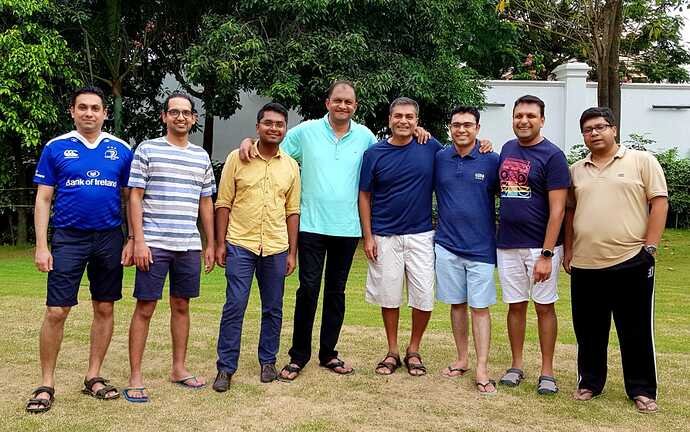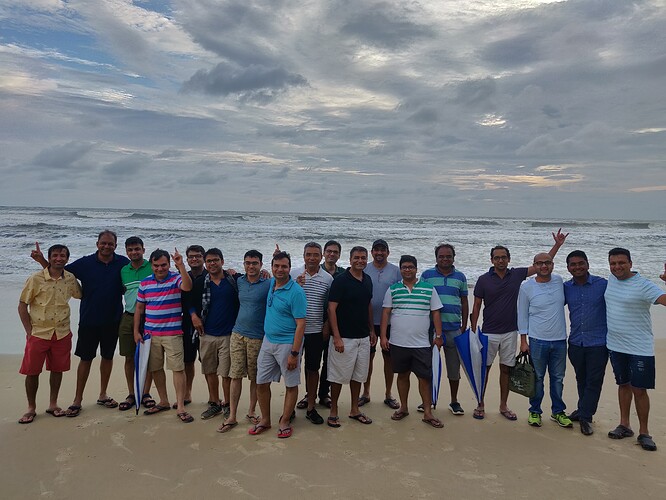Find enclosed my notes on Hiren Ved’s session at VP.
Hiren Ved’s Pearl:
Background:
Born and brought up in Mumbai, Graduated from Commerce and Qualified Cost accountant.
1990-95, Worked under KR Choksey. Focus was attending AGM, reading annual reports and understanding business:
1995-99: Worked with Prime Securities. Worked with smart investors which contributed in shaping of his mental framework in investment joinery
2000- Started Alchemy for providing PMS services.
Difference between PE and public investing:
In late nighties, he also benefited from significant increase wealth from TMT boom. As success follow, He decided that he understand IT sector very well and prepared from investment in PE in early investment in 2000. After difficult time, there was learning that there is fundamental difference between PE investment and Public investment. PE requires lot of understanding of business and at times, also running business.
Key changes in Markets:
Indian GDP in nominal terms growing at 10% now as against 15% during 2000 first decade
Demonitisation/GST/IBC are also related changes are slowing moving India where doing business in Old way of “managing environment” would be increasing difficult, while clean management with higher operating efficiency would be benefitting from this shift. He cited example of Titan. The new generations have no trust in traditional family Jewelers. Also, past ways to fund inventories and buying in Cash is also becoming difficult. This is one of factor which may benefit Titan in medium term. His disclaimer at this stage and onwards was that all example cited are more for business understanding and valuation perspective then recommendation. Same shall apply for all names mentioned in the discussion.
Controlling behavior is more important than identify a correct company for investment:
While he has success in identify Bajaj Finance very early (2010), he said that it was just 20% share in wealth creation. Holding Bajaj Finance over a longer period of time, through various phases, contributed in 80% of wealth creation. Also, Management of Bajaj finance was reasonably vigilant and risk averse, which was shown in action by closing very early Infrastructure lending book and LAP book as compared with other peers. That also improves confidence in the management ability to see emerging trends and benefit from same.
Worst of error in portfolio are committed in best of time. After very good performance, become very critical of own performance. Look at the company which is mediocre quality, which generally enter portfolio, as their relative valuation are good. KEEP CLEANING EGO. KEEP LEARNING.
How to identify a Good Business to invest:
Large external opportunity which is growing
Competitive advantage of player
Scalable, this is major issue with many management. While they can run current business very well, not able to scale due to limited delegation and lack of good manpower. He shared Example of Mr. Sunil Mittal, who started as Managing Director, took right team members, Identify segment to penetrate and grow and identify right member to lead the business. He, in turn evolves as a leader who then more focus on long term growth initiative with limited time being spent on day to day affairs.
Quality of Management and Governance: Past actions of Management, in case on active history and business appear interesting, Invest by way of “Foot in the Door” approach. Have a small tracking position and see how business is developing. Evaluate decision in the process, built conviction and take action (either increase/ exit the position).
Quantitative measures: ROCE, Leverage, Capital Allocation and Dilution. In case business has done dilution, whether all dilution has been value creating for a new investor in medium terms. In case dilution has not created value, the investor population as well as sentiment to new dilution would not be good. Give example of Bajaj Finance and Dhirubhai about successful dilution while Infrastructure/Power player’s dilution during boom period. These management could not get investor support due to loss suffered by investors in past dilutions.
Investment in Company like hiring a new employee:
Annual report of the company is like CV of prospective candidate for hiring
Management meet/Con Call/AGM are comparable to Interview
Check with competitor, Vendors, dealers is comparable to reference check.
Final decision would be to invest or hire the employee.
However, true character of business or employee is known only after we have invested/hired. So after 1-2 years’ experience, we may decide and increase/reduce our position in the company.
Growth at Reasonable Price (GARP):
He is believer in GARP investing as against Value investing. Value investing find difficult to work in Indian environment till now, as there was no mechanism in past to change the bad management. While IBC is trying to attempt same, still success of same would be known only in time to come. Hence, he has focus more on growth companies with good management then look at low P/E stocks.
While evaluating growth, it not only absolute growth, but also rate of change in growth (derivative of growth) is also important. Whenever derivative of growth moves in de-acceleration, the P/E gets de-rated quickly. Eicher was example of same.
Secondly, one also needs to look at what market expect from the company. When company consistently performs better/lesser then market consensus, after 2-3 quarters, PE would also be changed to reflect the realities in number.
View on current Bipolar Market
Currently in market, handful companies are showing new highs while more than 95% companies are not showing any change in price. This situation is reflection of market mood were growth has either become uncertain/negative. The companies with certainty of growth and good trustworthy management are getting very high valuation as that class is rare. Once overall economy improves and growth resume and trust in management restored, then the extra premium valuation for these companies would be spread over other players.
Quant Perspective
They have small team which also looks at quant as tool to identify potential investment approach. While he is not doing currently, they are thinking over idea to Rank their investment. Intending to develop a ranking model, which may result in reallocation with portfolio companies based on ranking.
There quant study on global companies indicate that market provide enough opportunity before major change in valuation. We are not able to grasp market signals. Wall mart was available at PE of 10 times for a very long period before market recognizes its business potential.
One more perspective was about using 200 Moving average, a technical analysis tool to fundamental. As per their study, more than 90% of the companies, which moved below 200 days moving average, continue to show longer period of decline. So if past is any indication, then it could be very good tool to evaluate exit decision in growth companies.
Benefit of equity investing
Equity investing has many advantages. One can gain from other people ability and benefit from same. Secondly, as against starting business, one can start business of equity investing without any physical infrastructure like office at a minimal cost. Equity investor is also saved from handling all the business stakeholders like Labour, Government, Lenders, and Vendors. By quick entry and exit, equity investor can enter/exit business within seconds, which take months for entrepreneurs. Thirdly, legitimate way to make money with limited tax. Dividend on equity is tax free (till Rs 10 Lakhs) while short term and long term capital gain (at 15% and 10% respectively) are also lower business income tax.
Economy cycle and market cycle
While both cycles generally move in tandem, market cycle is moving ahead of economy cycle. Valuation of company peak much in advance, when performance of the company is still improving and best of the numbers are yet to reach. Over a long term they merge, but in short term relationship may be divergent with market cycle is generally leading the economy cycle.
New Industry cycle: Version 1.0/2.0
In a new industry (like IT in late 1990s, Infra/Real Estate in 2004s), when the growth is high, return are disproptionate and every player/investor gain. However, this phase last for small period. Once the growth rate stabilizes and followed with dull period of long period of low growth, many players/investors gets weeded out. The surviving few develop competitive strength, newer products/market and scale advantage which give rise to Version 2.0 of industry growth. This growth is slower in pace then version 1.0, with fewer players but longer duration. The sustainable wealth can be made in version 2.0 industry growth, if one carefully identifies correct players. Real Estate/Retailing are now appearing to migrated from Version 1.0 to Version 2.0 in his opinion.
![]() . Few things which I noted:
. Few things which I noted:![]() full of rich content and it was possible only due to our strict disciplinarian @hitesh2710 bhai who ensured that we stick to timelines with a balance between exploration and respecting time.
full of rich content and it was possible only due to our strict disciplinarian @hitesh2710 bhai who ensured that we stick to timelines with a balance between exploration and respecting time.





